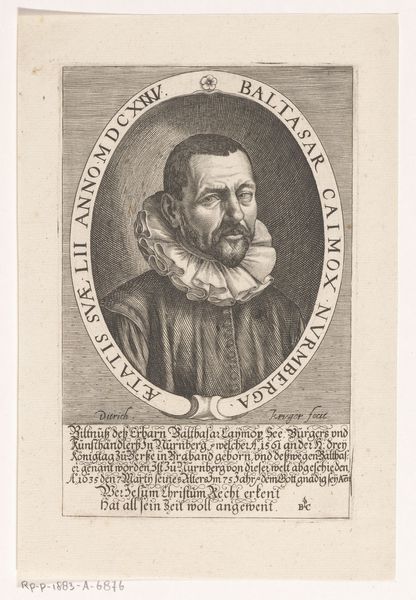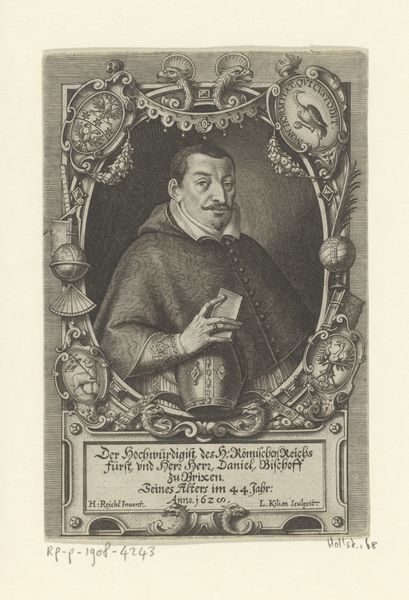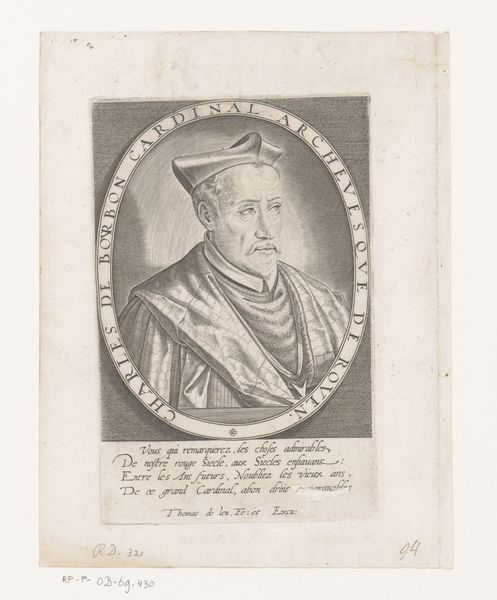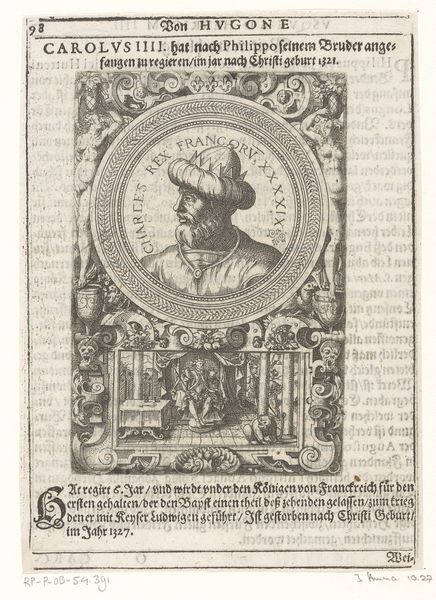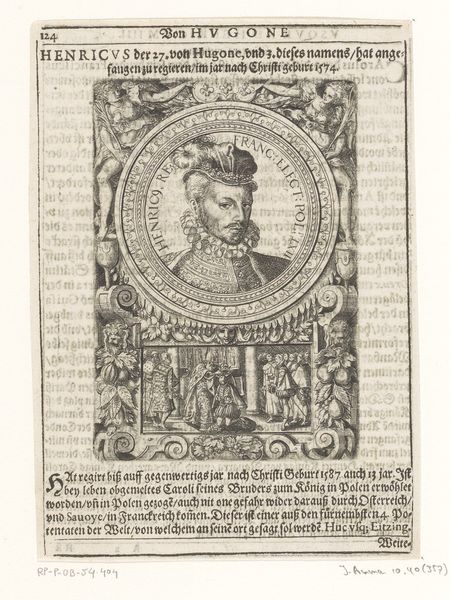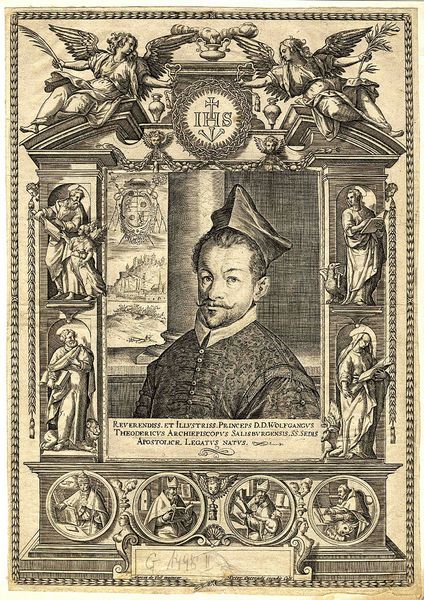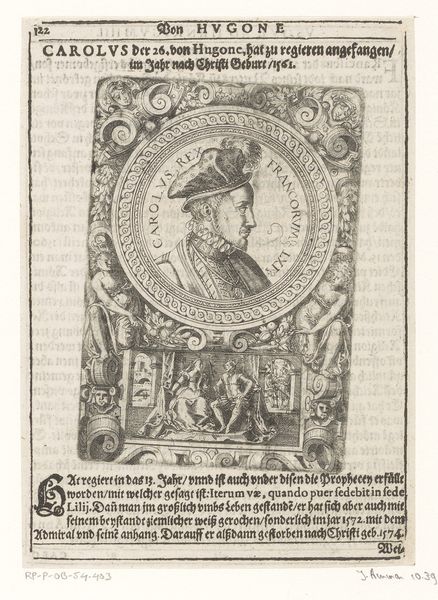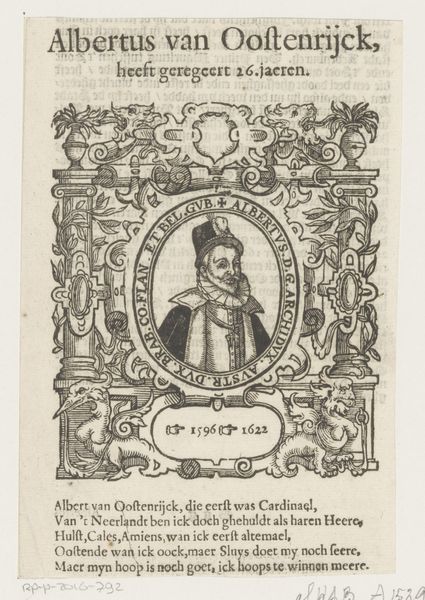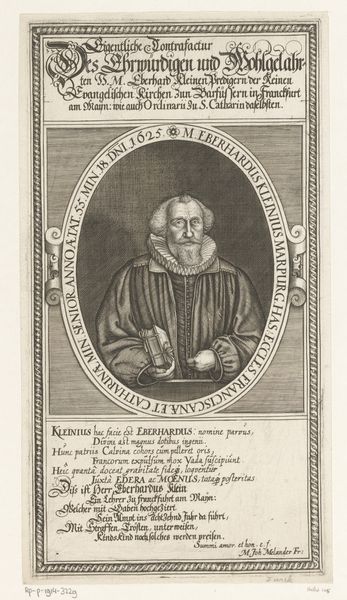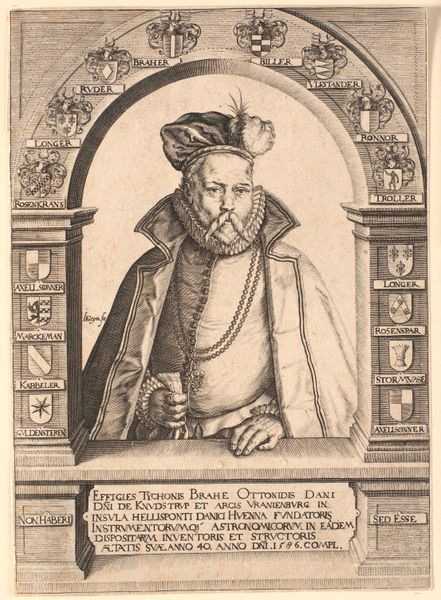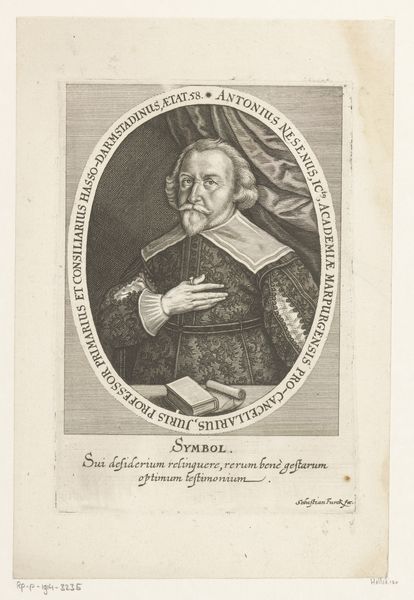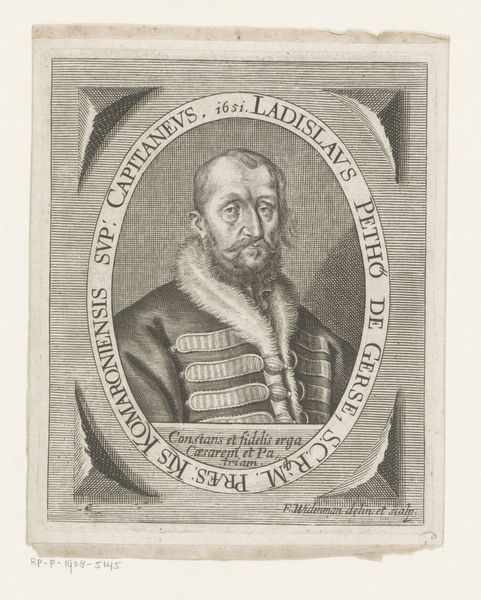
print, typography, engraving
#
portrait
#
script typeface
#
hand-lettering
# print
#
old engraving style
#
hand drawn type
#
hand lettering
#
typography
#
hand-drawn typeface
#
fading type
#
thick font
#
handwritten font
#
northern-renaissance
#
engraving
#
small lettering
Copyright: Rijks Museum: Open Domain
This is Lambertus Suavius’s portrait of Balthazar Schetz, created sometime before 1564. It is an engraving from a book page, which commemorates Schetz, a landowner and legal scholar. The portrait offers a glimpse into the life of a 16th-century nobleman, but also the complex dynamics of identity and representation in the context of the early printing press. During the Renaissance, portraiture was typically reserved for the elite, functioning as a display of status. Yet, here, Schetz's portrait is part of a printed book, making it a more accessible medium. The artist, Lambertus Suavius, positions Schetz as a figure of authority and intellect. Encircling the portrait, the inscription emphasizes Schetz's connection to Hoboken, suggesting a deep tie to his ancestral lands. This engraving reveals not only the physical likeness of Balthazar Schetz, but also signifies his social standing. In essence, it's a statement of identity, carefully crafted and disseminated through the printed page.
Comments
No comments
Be the first to comment and join the conversation on the ultimate creative platform.
